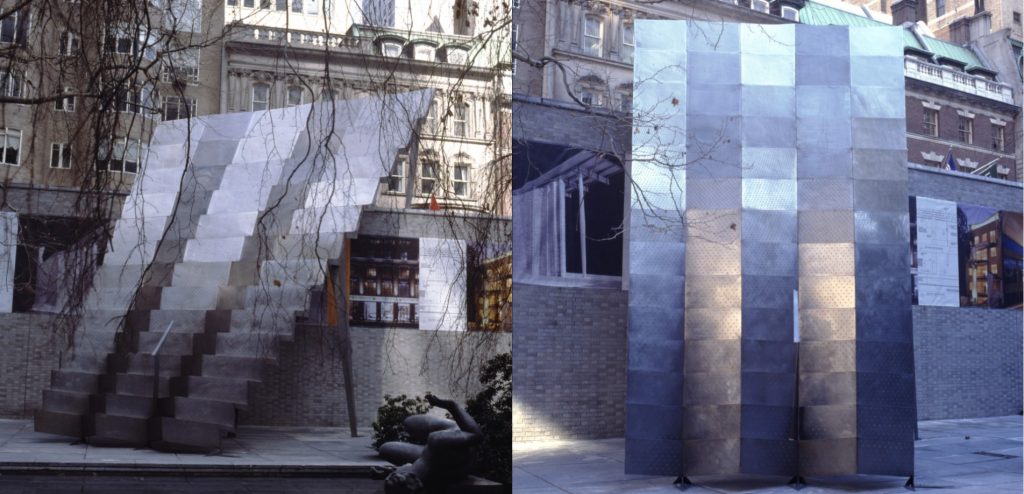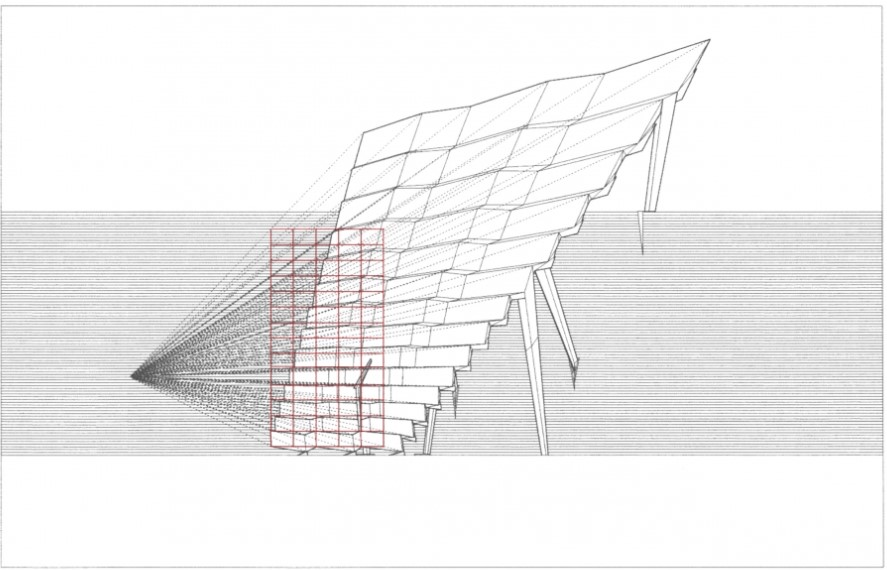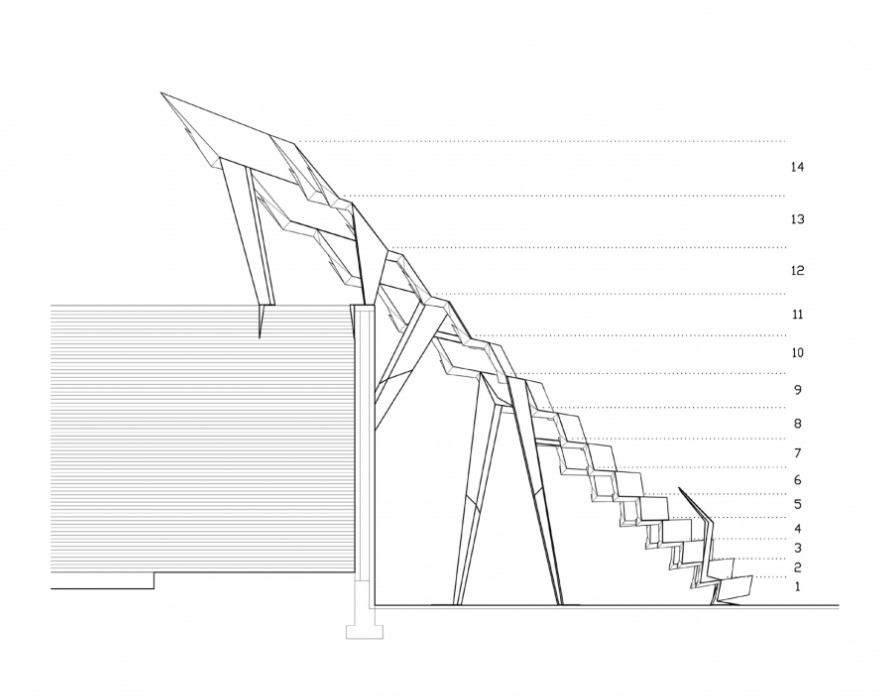Digital Fabrication/ Computational Fabrication

Computational fabrication is a relatively new field in comparison the rest of the discipline of building and making. With the advent of computational design and software the need for fabrication techniques to realize these new fantastical objects arose. Office Da an architectural firm based in Boston led by Nader Tehrani and Monica Ponce de Leon, explored these concepts in their piece “An Installation of folded Steel Plates” at the MoMa. Conceived in 1998 for the show “Fabrications” at the Museum of Modern art, Architecture as a discipline has just began to investigate the infinite possibilities of Digital fabrication with the opening of the Guggenheim Museum a year prior. For a building sized object to consist of many pieces of customized geometries and complex forms became possible with the inquiries the architects have made into computational designs and fabrication. In the installation Tehrani and Ponce de Leon created, they seek to use the fabrication techniques to blur the line between the traditional structural systems of architecture (tectonics) with actual geometrical design. They do this by digitally folding metal panels and stitching them together in very precise ways. The perforations on the panels are also generated via a computational device in order to lower the weight of the metal panels. The installation also relied on computational tools and fabrication to realize it’s optical illusionary characteristics. From certain angles the installation appears to be flat which it is actually conceived of many customized metal panels. This is interesting because the project begins to touch on the idea of mass customization, a process previously possible but costly. Large amounts of customizable pieces and objects can be designed and fabricated with the correct algorithms and machines. Customization, with the discoveries of Computational fabrication is no longer a luxury provided by the craftsman and artisans, but now a new mode of production.



![[OLD FALL 2020] 15-104 • Introduction to Computing for Creative Practice](wp-content/uploads/2021/09/stop-banner.png)